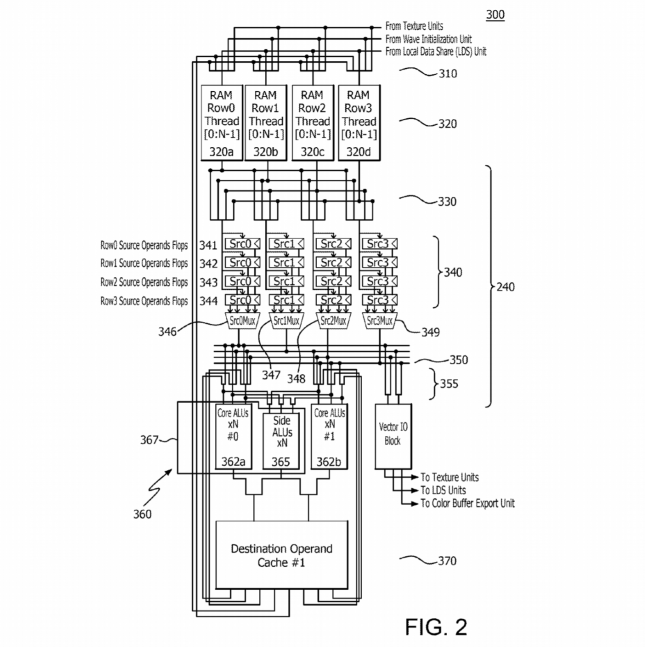AMD Seeks Patent On Super-SIMD for GPU Computing
AMD is applying for a patent on a Super-SIMD that will be used for GPU computing. The original filing date was November 2016, so this was done while Raja Koduri was running the Radeon Technologies Group. This looks like a major change to the Compute Unit (CU) used on the current Graphics Core Next (GCN) GPU architecture. This Super-SIMD design could be used on AMD’s upcoming Navi GPU architecture, but is likely for something further down the roadmap. Many expect Navi to launch in August of this year, so we are getting close to some new GPUs from AMD!
One Reddit user pointed out that this is similar to AMD’s Bulldozer micro-architecture; where two or more ALUs are ganged together. The ALUs can be full ALUs or partial ones. The main difference here is the use of a small cache bolted on to the group. The cache allows results from an operation to immediately passed to another ALU in the group, skipping L1 cache.
A super single instruction, multiple data (SIMD) computing structure and a method of executing instructions in the super-SIMD is disclosed. The super-SIMD structure is capable of executing more than one instruction from a single or multiple thread and includes a plurality of vector general purpose registers (VGPRs), a first arithmetic logic unit (ALU), the first ALU coupled to the plurality of VGPRs, a second ALU, the second ALU coupled to the plurality of VGPRs, and a destination cache (Do$) that is coupled via bypass and forwarding logic to the first ALU, the second ALU and receiving an output of the first ALU and the second ALU. The Do$ holds multiple instructions results to extend an operand by-pass network to save read and write transactions power. A compute unit (CU) and a small CU including a plurality of super-SIMDs are also disclosed.

